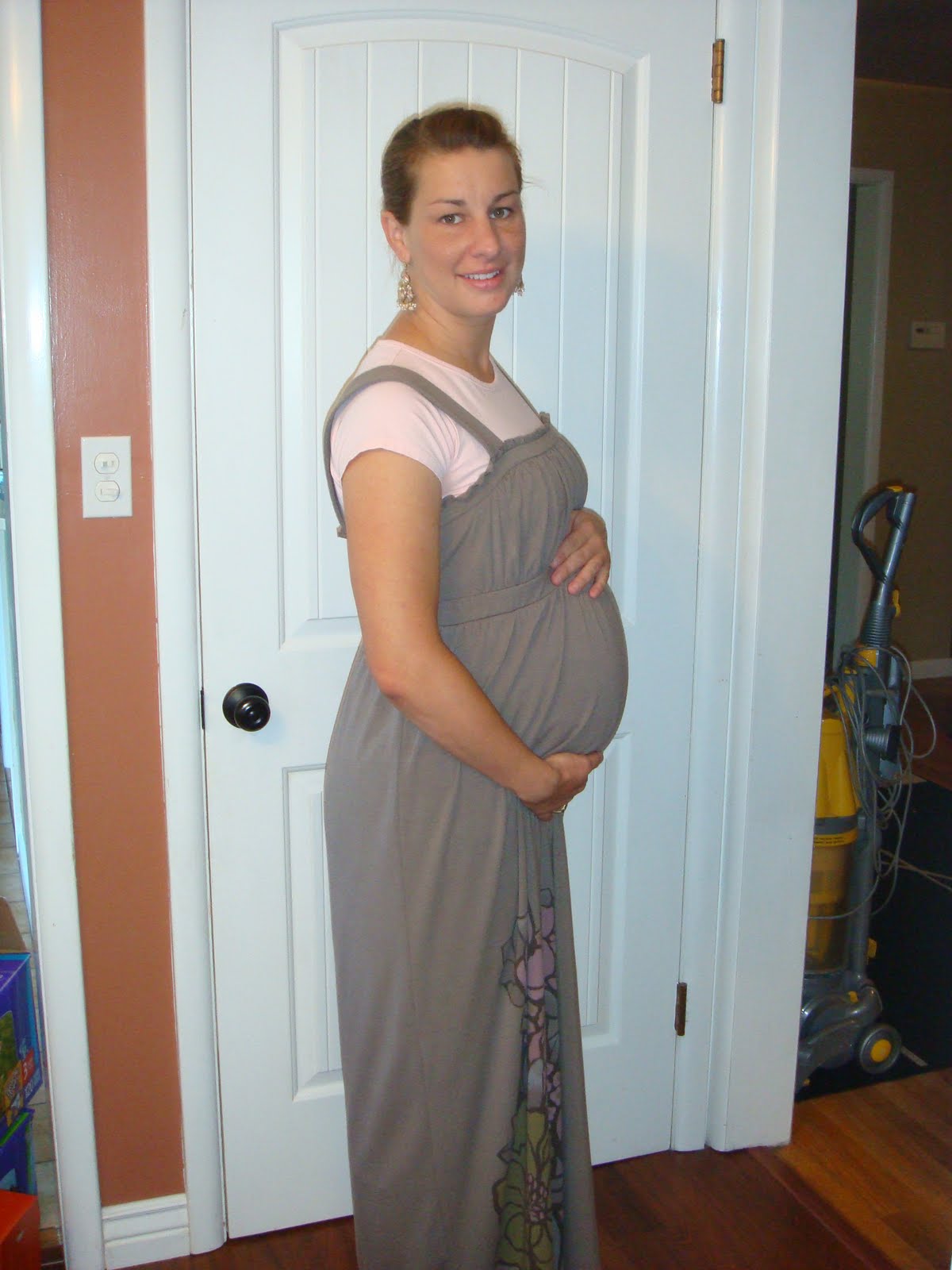Fetal development in pregnancy week 38:
Your baby now weighs 6.8 pounds and measures about 21 inches long. This is what many babies weigh when they are born, and your little one is just around the corner from arriving. Baby is gaining about an ounce each day.
Since your baby is using their lungs to practice breathing they may get hiccups occasionally and you will be able to notice these little jumps. The head and abdomen are about the same circumference at this point. The abdomen is large because of the liver, which is producing red blood cells.
Tear ducts will not appear until a few weeks after birth. The brain and the lungs are the last of the organs to develop, but both are nearly ready now. The lungs are developing surfactant now, which helps the alveoli expand. Baby can turn their head, react to sounds and lights and blink their eyes.
Vernix, the waxy substance that protects your baby’s skin while in the womb, is mostly gone now. There is a small amount left to help the trip through the birth canal go smoothly.
Your appetite may decrease now, as you have less room for everything, including your stomach, as the baby has grown larger. Remember to rest often because many sleepless nights are ahead!
Maternal Changes
By 38 weeks pregnant you may start worrying again about the labor process. Keep in mind that you could start labor at any point in time. You should be ready to go armed with your doctors phone number and your hospital bag. What will you need to take with you? That varies from woman to woman. Some good items to have however may include a robe, slippers or warm socks, lip balm, a change of clothes, personal toiletries, a magazine and nursing pads.
Dad
I highly encourage men to go in to be present at the birth. It is one of the most amazing experiences you will ever be able to have. Be assured that you will only have to watch or participate as much as you feel comfortable with. For some men this will be little more than holding your partners hand and gazing into her eyes. If you wish to take a more active role this may include labor support (breathing, massage, heat and cold packs, etc.), cutting to cord, helping to catch the baby. These are all fine, but should be discussed with your practitioner ahead of time, so that they know your preferences.
Maternity Clothes
Some practitioners routinely wish to induce moms of multiples at this point. Be sure to discuss the pros and cons of induction with your practitioner.
Pregnancy Health Tips
One of the most important things you will need to take to the hospital with you is an infant car seat. In fact, the hospital will not let you leave without one. All infants must be transported in a rear facing infant carrier until they are about 20 pounds heavy. The best thing you can do to alleviate some of your pre labor jitters is to have your car seat professionally installed. Check in with your local fire department. Most agencies have certified car seat technicians on staff that can check out your carrier and ensure that it is installed properly in your car. Your car seat must be used correctly in order to provide your baby with adequate protection in the event of an accident.

Never re-use a car seat that has been in an accident. It may have been damaged in some way or another, and this could compromise the safety and well being of your new child.
You should also consider packing some nice things for your baby, including an outfit for the trip home and a warm baby blanket. If it is cold outside, consider bringing some booties, gloves and a hat for your little one.
Many hospitals will offer pictures of your baby during your stay. If you want to have your baby’s first photo taken while in the hospital, bring an outfit to show her off in. Sometimes getting your baby’s first photo taken in the hospital is more convenient than trying to drag your newborn baby to the photo shop during the first few weeks of life. You can usually also order custom birth announcements when you get your babies photo taken.
Twin Tips
Some practitioners routinely wish to induce moms of multiples at this point. Be sure to discuss the pros and cons of induction with your practitioner.

